ACCUTRON has just introduced the Astronaut GMT Automatic, a modern remake of the 1968 “T” model, featuring a day/night bezel and world time functionality.
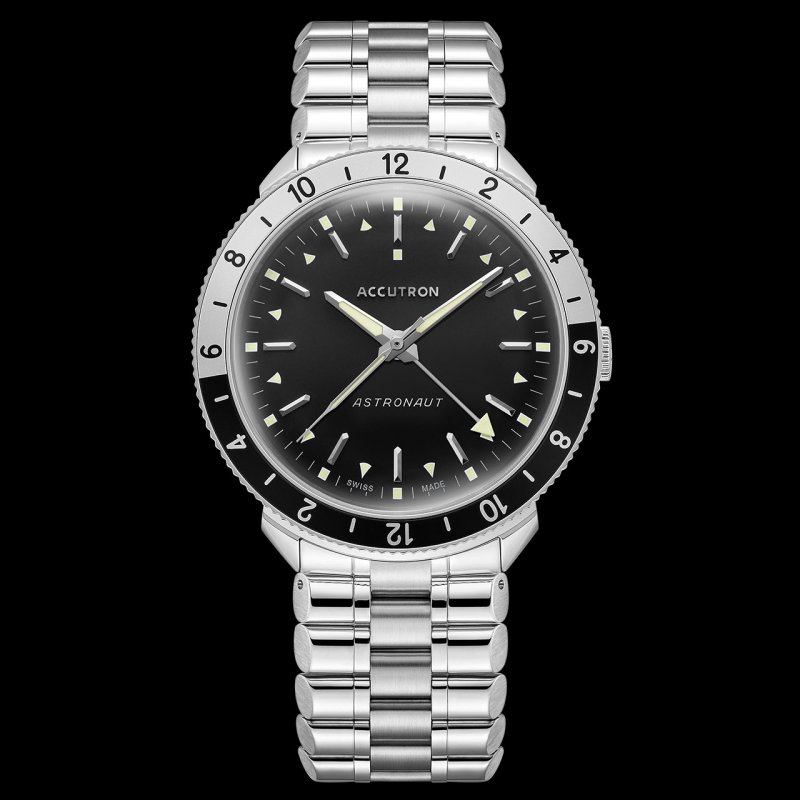
Before diving into the watch itself, it’s worth clarifying the relationship between BULOVA and ACCUTRON—a point that still confuses many enthusiasts. So, is ACCUTRON a part of BULOVA? And if so, where did the familiar BULOVA tuning fork logo go?
To answer that, we go back to 1960, when a groundbreaking watch was born in New York City: the ACCUTRON, considered the world’s first fully electronic watch. With its futuristic skeletonized dial and tuning fork technology, it marked the dawn of a new era in horology.
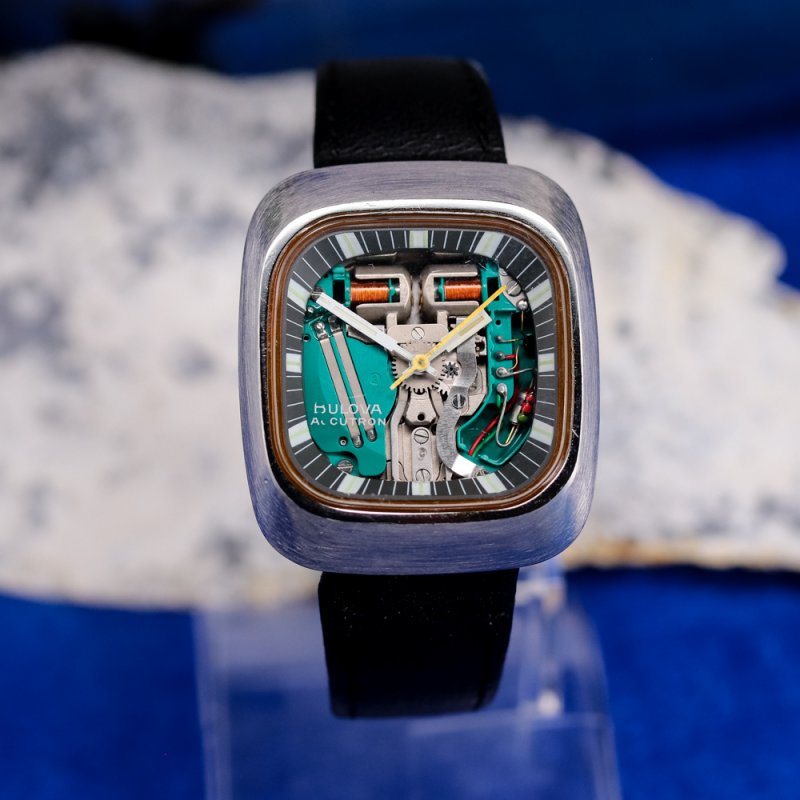
Fast forward 60 years. In 2020, following Citizen Group’s acquisition of Bulova in 2008, ACCUTRON was officially relaunched as an independent brand. The move positioned it as a niche, premium, and more exclusive label within Citizen’s portfolio.
Now back to the new Astronaut GMT Automatic. The watch features a 41 mm stainless steel case, 13.85 mm thickness, and 100 meters of water resistance.
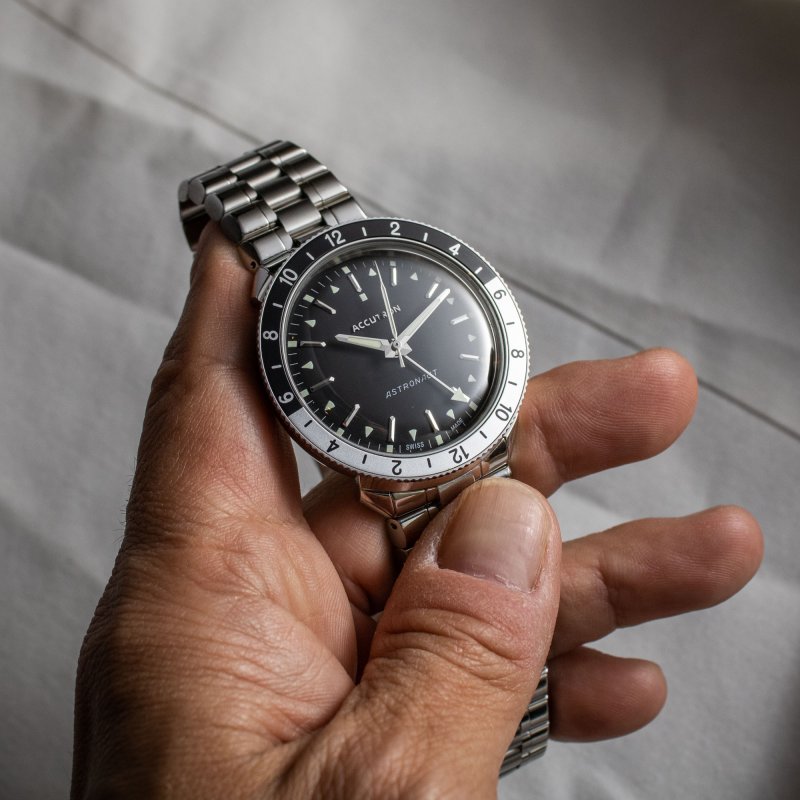
Protected by a domed sapphire crystal with anti-reflective coating, the matte black dial displays applied baton hour markers alternating with small triangular indices marking half-hour increments—useful for the GMT function.
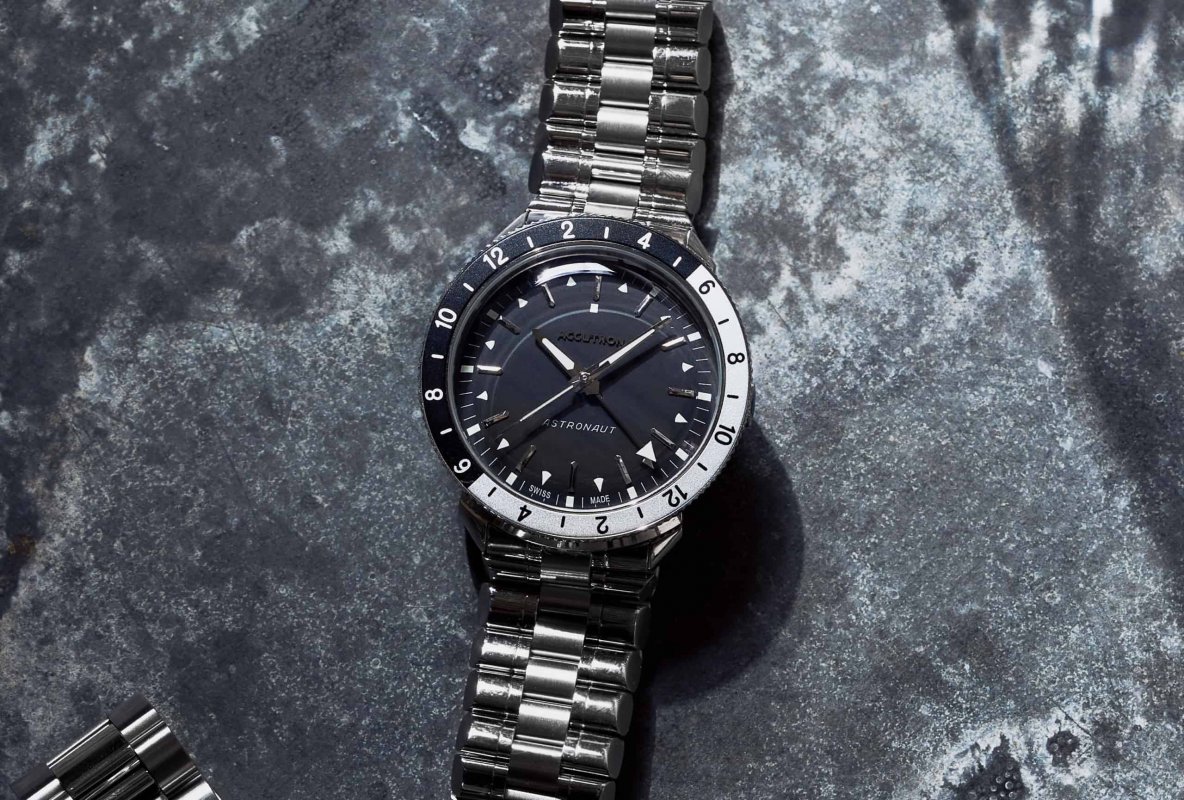
The broad silver main hands contrast sharply against the dark dial, while the slender GMT hand ends in a large luminous triangle tip. All hands are coated with Super-LumiNova for excellent night-time legibility.
Visible through the exhibition caseback is the Swiss-made Sellita SW330 automatic movement—a robust clone of the ETA 2893—running at 4 Hz with a 56-hour power reserve.
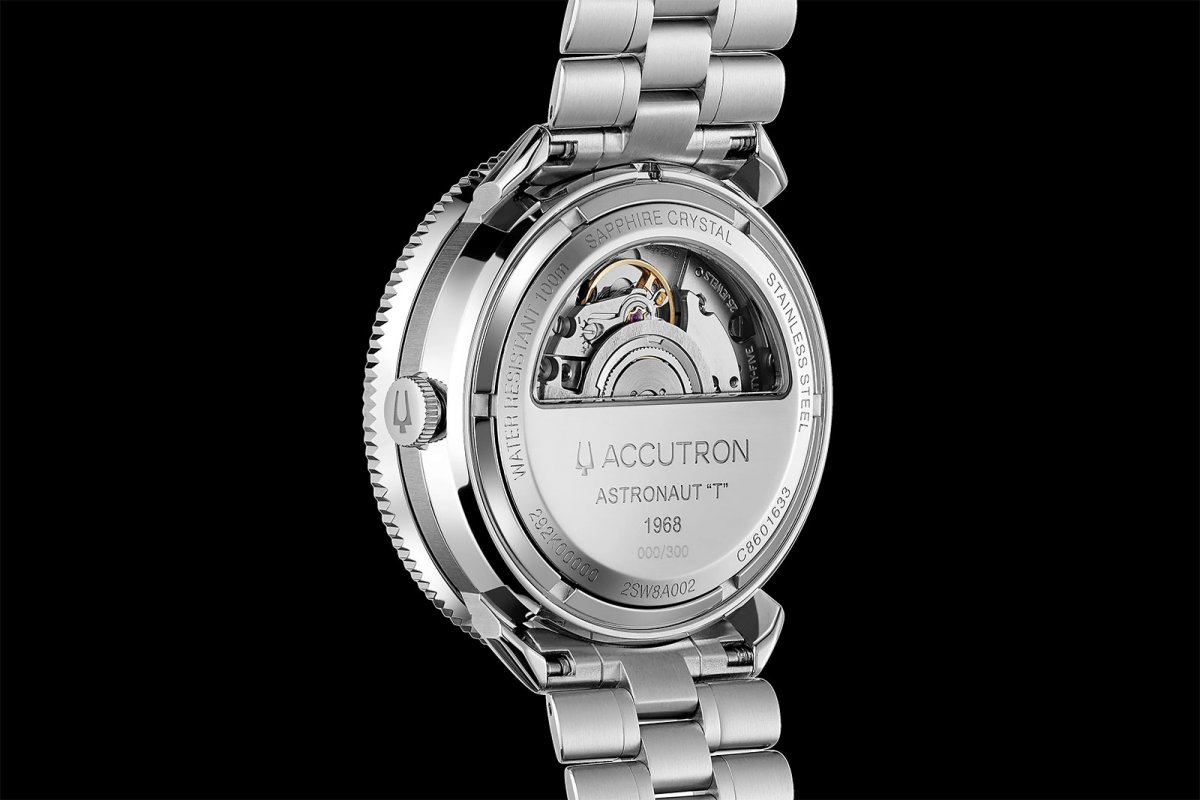
The watch comes with a striking “bullet” link stainless-steel bracelet with a sturdy double-folding clasp.
Limited to 300 pieces, the ACCUTRON Astronaut GMT Automatic retails for USD 3,500.
More here.


 Tiếng Việt
Tiếng Việt